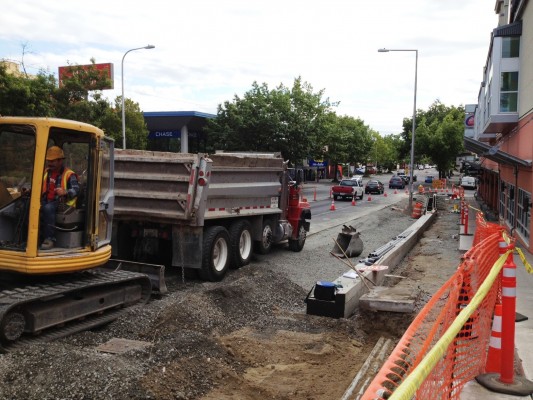Highway Safety Improvement Program
MAP-21 retains the Highway Safety Improvement Program (HSIP) as one of the core highway programs intended to reduce injuries and fatalities on all public roads, pathways or trails. There is a new emphasis on enhanced data collection and performance. And for the first time a “road user” is defined as both a motorized and non-motorized user (i.e., someone walking or biking). These two shifts lay the framework for more effective spending of safety dollars on projects that make roads safer for all users.
Funding
SAFETEA-LU: $1.2B
MAP-21: $2.4B
Eligible projects
Any project on a public road, trail or path that is included in a state’s Strategic Highway Safety Plan and corrects a safety problem such as an unsafe roadway element or fixes a hazardous location is eligible for HSIP funding. Eligible projects include, but are not limited to the following: intersection improvements, construction of shoulders, high risk rural roads improvements, traffic calming, data collection, and improvements for bicyclists, pedestrians, and individuals with disabilities.
MAP-21 does not eliminate any eligible project categories that were previously eligible under SAFETEA-LU. In addition, the bill clarifies that retroreflectivity upgrades, truck parking facilities, safety audits, older driver improvements and systemic safety improvements are eligible expenses. Other non-infrastructure safety projects are eligible for HSIP funding, including safety education, training, and workforce development.
How the program works

The HSIP is guided by a data-driven state strategic highway safety plan that defines state safety goals, ranks dangerous locations, and includes a list of projects.
Under MAP-21, the safety plan is required to improve data collection on crashes and updates to more accurately identify
dangerous locations. One important change is the move to use crash rate as opposed to the total number of crashes to determine the relative danger of a roadway, intersection, or bike/pedestrian facility. For instance, a particular roadway may not have the highest number of total crashes, but a high number relative to daily traffic counts or total vehicle miles traveled.
Finally, the Secretary is required to reassess which design elements make roadways unsafe and states are required to use this updated list as a guide when identifying hazardous locations. These updates should help states prioritize safety spending on fixing the elements that make those roads dangerous for all road users.
Performance and Accountability
For the first time, USDOT will establish performance measures to assess serious injuries and fatalities. States and regions will set targets using these measures, and incorporate those targets into their safety plan as well as into their statewide and regional planning processes.
MAP-21 replaces the former reporting structure, which focused primarily on cost needs, with a more comprehensive reporting process. The bill requires states to report on progress made implementing highway safety improvements and the extent to which they have made progress toward their safety targets.
Penalty: If a state has not met or made significant progress toward meeting its safety targets within two years, it must submit a report detailing how it will make progress in meeting performance targets. In addition, the state loses the flexibility to spend safety funding on other non-infrastructure safety projects such as safety education.
High Risk Rural Roads (HRRR): MAP-21 eliminates the $90 million annual set-aside for safety spending on high risk rural roads, or any public road in a rural area identified in the safety plan as having significant safety risks. But these roads won’t be neglected. If fatalities on these rural roads increase under MAP-21, states must spend a minimum amount of safety funds on those roads (equal to 200% of the FY 2009 HRRR set-aside).
Older drivers: If serious injuries and fatalities increase for older drivers and pedestrians, a state must specifically incorporate strategies to address the increases in the next safety plan update.






